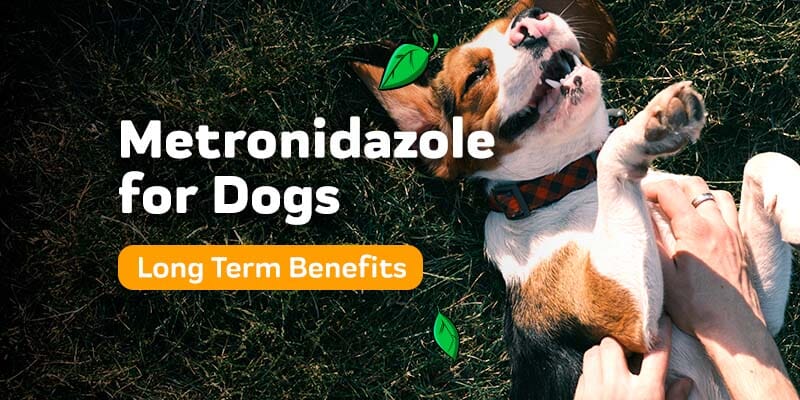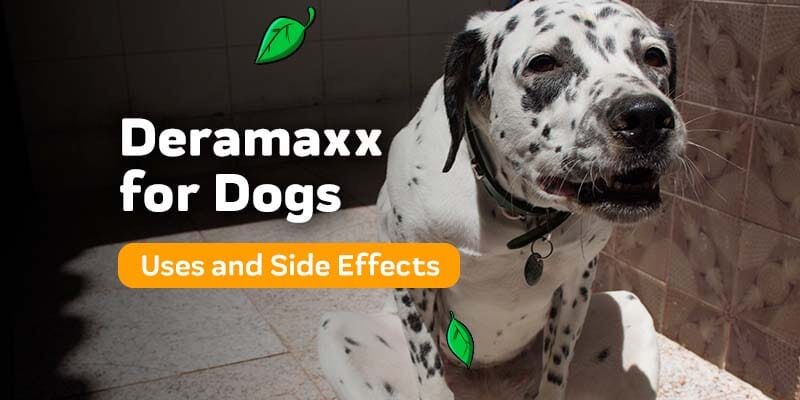- What Is Gabapentin?
- Why Vets Prescribe Gabapentin for Dogs
- Gabapentin Dosage for Dogs by Weight and Condition
- Safety Considerations for Gabapentin for Dogs
- Gabapentin Side Effects in Dogs and Why They Happen
- How to Stop Gabapentin for Dogs Safely
- Natural Alternative to Gabapentin for Dogs
- FAQs
Walking away with a new prescription for gabapentin for dogs is reassuring, but it also raises valid concerns about your pet’s safety and personality changes.
It’s commonly prescribed by veterinarians for pain and anxiety, but its “off-label” status makes it difficult to find reliable information on how to use it and what its side effects are.
To provide the best care for your dog, you need to understand how gabapentin works, what the “gabapentin wobble is,” and how to manage this medication as part of a holistic approach to your dog’s health.

What Is Gabapentin?
Gabapentin for dogs (commonly known by the brand name Neurontin) is a prescription medication classified as an anticonvulsant and analgesic. While it was originally developed to treat seizures in humans, veterinarians quickly discovered that it’s incredibly effective for treating our pets, too.
However, you might notice that the bottle doesn’t explicitly say “for dogs.” That’s because gabapentin is prescribed “off-label.” This simply means that while the FDA has approved it for humans, vets legally prescribe it for dogs based on broad medical consensus and successful studies.
How Does Gabapentin Work?
To understand why this drug is used for everything from arthritis to fear of fireworks, you have to look at the brain.

Unlike standard painkillers (NSAIDs) that target inflammation at the site of an injury, gabapentin works on the nervous system. It binds to specific calcium channels in your dog’s brain and spinal cord.
When your dog is in pain or anxious, their nerves are firing loudly and rapidly. Gabapentin essentially tells their brain to calm down, inhibiting the release of excitatory neurotransmitters like glutamate. This dampens the perception of pain and quiets the “noise” of anxiety.
Why Vets Prescribe Gabapentin for Dogs
Because it targets nerves rather than just inflammation, gabapentin is a versatile tool in the veterinary kit. It’s primarily used for three specific conditions.
Chronic Pain and Arthritis Relief
This is the most common use. Gabapentin is particularly effective for “neuropathic pain.” That’s pain caused by damaged nerves, slipped disks, or spinal issues. It’s also frequently used as an add-on therapy for arthritis.
When combined with an NSAID (like carprofen), it creates a synergistic effect and attacks the pain from two different angles for better relief.
Situational Anxiety
You’ll often hear vets refer to this as the “chill protocol.” Gabapentin is prescribed for dogs to help them cope with stressful, short-term events like vet visits, grooming appointments, thunderstorms, or car rides.
It’s highly effective for this purpose. In a study on behavioral disorders, 72% of dog owners reported that gabapentin was “moderately or very effective” at improving their dog’s behavior and reducing signs of stress.
Seizure Management
As an anticonvulsant, gabapentin is used to help manage epilepsy. However, it’s rarely used on its own. It’s typically prescribed as an adjunctive (add-on) therapy when primary medications, like phenobarbital, aren’t quite doing enough to control the seizures.
Gabapentin Dosage for Dogs by Weight and Condition
Finding the right amount of medication for your dog isn’t always an exact science right away. Because gabapentin for dogs is used for such a wide variety of issues (from arthritis to major phobias), the dosage can vary wildly.
Veterinarians typically follow a “start low and go slow” approach. The goal is to find the sweet spot where your dog gets relief without getting too sleepy.
Here are the general ranges you might see based on what’s being treated, but remember that you must always follow your vet’s specific prescription.
| Dog Weight | Mild Pain/Anxiety (10 mg/kg) | Moderate Pain (20 mg/kg) | Severe Pain/Seizures (30 mg/kg) |
|---|---|---|---|
| 5 kg | 50 mg | 100 mg | 150 mg |
| 10 kg | 100 mg | 200 mg | 300 mg |
| 20 kg | 200 mg | 400 mg | 600 mg |
| 30 kg | 300 mg | 600 mg | 900 mg |
Note: One specific thing about gabapentin is that it leaves the body relatively quickly (it has a short “half-life”). This is why your vet might prescribe it three times a day (every 8 hours). You must be consistent to keep those pain or anxiety signals dampened around the clock.
Safety Considerations for Gabapentin for Dogs
Gabapentin is widely used, but it isn’t without risks. There are three specific safety areas every pet parent needs to understand before administering the first dose.
Giving Human Gabapentin to Dogs

If you have a bottle of gabapentin in your own medicine cabinet, you might be tempted to use it to help your dog. Please do not do this without checking the label very carefully.
While the capsules used for humans are generally the same as those for dogs, liquid gabapentin made for humans is often dangerous for pets.
Many liquid formulations contain xylitol (sometimes listed as birch sugar). It’s safe for us but causes a rapid, life-threatening drop in blood sugar and liver failure in dogs. Even a small amount can be toxic.
Always double-check with your vet to make sure the version you’re using is 100% dog-safe.
Gabapentin Drug Interactions
Gabapentin is usually used as part of a “multimodal” plan, meaning it’s paired with other drugs. Although it’s generally safe, it can interact with other common medications.
- Antacids: Medications for acid reflux can prevent gabapentin from being absorbed. Wait at least 2 hours between doses.
- Hydrocodone or morphine: These main medications can increase the strength of gabapentin and will sedate your dog harder.
- **Trazodone:** This medication is often given alongside gabapentin for severe anxiety, but it often increases drowsiness and incoordination.
Gabapentin Metabolization in Dogs
There’s one important biological difference between dogs and humans that’s helpful to know. Humans process gabapentin almost entirely through the kidneys, while dogs metabolize it through both the liver and the kidneys.
This matters because if you have a senior dog or a dog with pre-existing kidney or liver issues, it takes longer for their body to break down the medication. This means the “wobble” or sedation might last longer for them, and your vet may recommend a lower dose to keep them comfortable.
Gabapentin Side Effects in Dogs and Why They Happen
Though gabapentin is typically safe for dogs, its ability to calm the nervous system can sometimes bring mild side effects.

Ataxia
The most common result of gabapentin is something many pet parents jokingly call the “Gabapentin wobble.”
You might notice your dog stumbling, crossing their paws, or looking uncoordinated, almost as if they’re a little drunk. Medically, this is known as ataxia. It happens because the drug is slowing down the transmissions of nerve signals from the brain to the body.
Essentially, your dog’s brain is sending the signal to “walk,” but the message is arriving at their legs a split second slower than usual. Although startling to see, this is usually temporary and fades away within 24 hours as their body adjusts to the new routine.
Sedation and lethargy
Beyond just being wobbly, you might find your dog is sleeping far more than usual or is difficult to rouse from a nap.
This occurs because gabapentin blocks the release of “excitatory” neurotransmitters, which are the chemical messengers that keep the brain alert. It’s effectively turning down their energy level all the way down.
Like wobbles, this sedation is often strongest during the first few days of treatment as the brain adjusts to this new baseline of calm.
Digestive upset
Occasionally, your dog might experience vomiting or diarrhea shortly after starting the medication. This isn’t usually due to the drug’s effect on the brain but rather the digestive system reacting to a new foreign substance or sometimes an irritation caused by the capsule itself.
If you notice this, try giving the medication with a full meal to help buffer their stomach.
How to Stop Gabapentin for Dogs Safely
If your dog seems better, or if the side effects are becoming difficult to manage, you might feel the urge to stop the medication immediately. However, simply cutting off the supply can be dangerous to your best friend.
Because gabapentin alters how the brain chemistry handles nerve signals, abrupt removal can send the system into a state of shock. This will usually lead to two serious outcomes:
- Rebound pain: The pain returns even more intensely than before because the nerves have become hypersensitive.
- Withdrawal seizures: Even if your dog has never had a seizure in their life, stopping this medication “cold turkey” can trigger one.
To protect your dog, you must always wean them off the medication slowly to allow their brain time to readjust. Your veterinarian is your partner during this journey.
If you feel it’s time to transition your dog off pharmaceuticals, you need a structured approach to do it safely. Read our step-by-step guide: 5 Steps to Slowly Drift Away from Giving Your Dog Medications
Natural Alternative to Gabapentin for Dogs

Gabapentin is effective, but many pet owners worry about long-term sedation and prefer natural alternatives, like CBD products.
Unlike gabapentin, which blunts nerve signals, CBD oil interacts with the endocannabinoid system to help modulate the body’s response to inflammation and stress. It restores balance rather than just blocking sensation.
These distinct pathways allow them to pair well; adding CBD may help you eventually lower the gabapentin dose (consult your vet first), which means fewer “wobbles” and more clarity for your dog without sacrificing comfort.
- PurCBD+ Oil is our full-spectrum solution. Because it’s liquid, it allows for you to precisely adjust the dose to find the right balance alongside prescriptions for your dog.
- If you use gabapentin primarily for arthritis, our hemp dog chews combine CBD with other functional ingredients to support joint health. For maximum support, consider our complete mobility chew bundle.
- For picky eaters struggling with anxiety or stress who refuse oil, our steak cheese and hemp treats are soft, savory, and offer a delicious, stress-free way to provide calming support.
Find the Best Care Plan for Your Best Friend
Seeing your dog in pain or distress is one of the hardest parts of being a pet parent. Gabapentin is a go-to solution in the veterinary toolkit, and for severe nerve pain or seizures, it can be a lifesaver.
But for many owners, it shouldn’t be the only tool. Real wellness is about managing your dog’s discomfort without losing the spark that makes them who they are.
You might be dealing with side effects, looking for a gentler anxiety solution, or trying to support your dog’s joints. Whatever the concern, you don’t have to settle for sedation. Comfort and calm are possible.
If you’re unsure about how to combine natural supplements with your dog’s current medication, our team of pet wellness experts is here to help. Call us at (310) 817-5731.
Frequently Asked Questions
Gabapentin typically costs between $5 and $10 for a 60- to 100-capsule supply of the generic 100 mg version, depending on the pharmacy and delivery options.
You’ll need veterinary approval to purchase it, and it’s available at Petco pharmacy, veterinary clinics, and websites like Chewy and VetRxDirect.
It typically takes about 1 to 2 hours for the medication to reach its full effect. This is why, for situational anxiety (like vet visits or fireworks), vets recommend giving the dose well before the stressful event starts.
Yes, sedation is the most common side effect. While it’s an anticonvulsant and pain reliever, its mechanism of quieting the nervous system often results in drowsiness, especially during the first few days of use.
Yes, veterinarians often prescribe these two medications together, especially for post-surgical recovery or severe anxiety. However, using them together can increase the level of sedation and incoordination (the "wobbles"), so you should monitor your dog closely.
If you miss a scheduled dose, give it as soon as you remember. However, if it’s almost time for the next dose, skip the missed one and continue with your regular schedule. Never give a double dose to "catch up," as this can increase the risk of side effects.
Technically, no. It’s not a traditional painkiller like an NSAID (Rimadyl or carprofen), which targets inflammation. Instead, gabapentin is a neuropathic analgesic. It works by changing how the nerves send pain signals to the brain. This is why it’s often paired with an NSAID to tackle pain from two different angles.
Yes, this is a very common use. Because it takes 1 to 2 hours to kick in, it’s best to give the dose well before the fireworks begin. Many vets recommend a "trial run" on a quiet day to see how your dog reacts to the medication first.
Gabapentin has a short "half-life" of about 2 to 4 hours in healthy dogs. This means it’s usually completely out of their system within 24 hours after the last dose.
While gabapentin has a wide safety margin, an overdose can cause extreme sedation, stumbling, and lethargy. If your dog gets into the bottle, call your veterinarian or the Pet Poison Helpline immediately.
No, gabapentin isn’t a narcotic or an opioid. It’s an anticonvulsant. However, in some states, it’s a "controlled substance" because of its potential for misuse in humans.
Approved by:
Dr. Ivana Vukasinovic
Doctor of Veterinary Medicine, University of Belgrade
 Ivana Vukasinovic grew up in Serbia and attended the University of Belgrade where she received a degree in Veterinary medicine in 2012 and later completed surgical residency working mostly with livestock. Her first year of practice was split between busy small animal practice and emergency clinic, and after two more years of treating many different species of animals, she opened her own veterinary pharmacy where an interest in canine and feline nutrition emerged with an accent on fighting animal obesity. In her free time, she acts as a foster parent for stray animals before their adoption, likes to read SF books and making salted caramel cookies.
Ivana Vukasinovic grew up in Serbia and attended the University of Belgrade where she received a degree in Veterinary medicine in 2012 and later completed surgical residency working mostly with livestock. Her first year of practice was split between busy small animal practice and emergency clinic, and after two more years of treating many different species of animals, she opened her own veterinary pharmacy where an interest in canine and feline nutrition emerged with an accent on fighting animal obesity. In her free time, she acts as a foster parent for stray animals before their adoption, likes to read SF books and making salted caramel cookies.
Thanks for stopping by!
P.S. We Love You!
Sincerely,
The Innovet Team
Please do not ask for emergency or specific medical questions about your pets in the comments. Innovet Pet Products is unable to provide you with specific medical advice or counseling. A detailed physical exam, patient history, and an established veterinarian are required to provide specific medical advice. If you are worried that your pet requires emergency attention or if you have specific medical questions related to your pet’s current or chronic health conditions, please contact or visit your local/preferred veterinarian, an animal-specific poison control hotline, or your local emergency veterinary care center.
Please share your experiences and stories, your opinions and feedback about this blog, or what you've learned that you'd like to share with others.

















Hello Angelique,
The two together can produce adverse effects that are often not desirable unless you happen to be a veterinarian with extensive knowledge on how both products work together and what dosage is necessary. For anyone else, always go against this combination as there’s no way of telling what amount of reactions might occur between these two.
Can you combine Gabapentin with CBD oil?